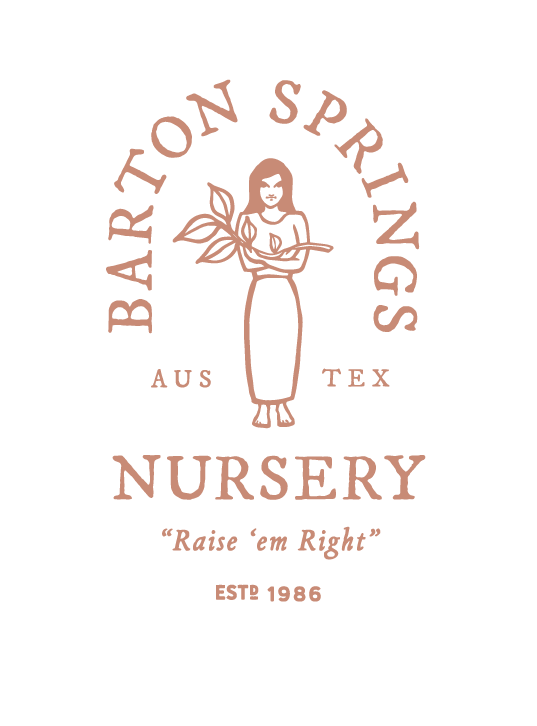Bamboo in Austin
Bamboo is a group of woody perennial evergreen and semi-evergreen plants in the true grass family Poaceae, subfamily Bambusoideae, tribe Bambuseae.
Some of its members are giant bamboo, forming by far the largest members of the grass family. Bamboo is the fastest growing woody plant in the world. Their growth rate (up to 3ft. /day) is due to a unique rhizomedependent system, but is highly dependent on local soil and climate conditions.
There are two types of bamboo - monopodial, or running bamboo, and sympodial, or clumping bamboo. Monopodial bamboo is what your neighbor might plant across the other side of the yard, and before long you've got it too. It can be a menace so please be sure to do your research and prep work before introducing certain varieties to the landscape. Bamboos might look the same, but there is a way to differentiate the types by looking at the branches. A sympodial bamboo has a main branch, with two secondary branches on either side - look for these three main branches, for a bamboo recommended for the garden.
The following is a list of the bamboos we typically carry:
Clumping (Sympodial) Genus Bambusa includes clumping bamboos, with numerous branches at a node, one or three much larger than the rest.
Bambusa multiplex – common name is Hedge Bamboo; max-height 15-20 feet; cold hardy to 10° F; full to part sun; each node bears a large number of branches down to the culm base, making a dense hedge; hardiest of the Bambusa.
Bambusa multiplex ‘Alphonse Karr’ – common name is Alphonse Karr Bamboo; max-height 25 feet; cold hardy to 15° F; full to part sun; similar to the species, but the culms and branches are bright yellow with irregular longitudinal narrow dark green stripes; new shoots and culms are often reddish.
Bambusa multiplex 'Golden Goddess' – common name is Golden Goddess Bamboo; max height is 10 feet; cold hardy to 15° F; full to part sun; a dwarf form similar to 'Fernleaf' but with larger leaves; culms tend to be yellowish.
Bambusa multiplex ‘Riviereorum’ – common name is Chinese Goddess Bamboo; max height is 8 feet and very; cold hardy to 15° F; full to part sun; has solid culms and tiny leaves; similar to 'Fernleaf' but smaller, more delicate looking.
Bambusa oldhamii ‘Giant Timber’ – common name is Giant Timber Bamboo; max height is 55 feet; cold hardy to 20° F; full to part sun; most common giant tropical bamboo grown in the U.S.; culms straight and erect with relatively short branches; leaves are rather wide.
Bambusa tuldoides ‘Punting Pole’ – common name is Punting Pole Bamboo; max height is 45 feet; cold hardy to 15° F; full to part sun; has thick-walled culms used as actual punting poles; medium-sized leaves Bambusa ventricosa.
‘Buddha’s Belly’ – common name is Buddha’s Belly Bamboo; max height is around 40 feet; cold hardy to 10° F; full to part sun; when containerized the culms bulge (like a Buddha belly) between nodes because of root-bound stress; medium-sized leaves.
Bambusa textilis gracilis - common name is Weaver’s Bamboo or Graceful Bamboo; max height is 30-40’; evergreen to at least 18°F, root hardy to 0°F; full sun; thin-walled culms without branches on the lower half; excellent as a tall screening hedge.
Running (Monopodial) Genus Phyllostachys includes medium to giant runners which have a distinct groove above pairs of unequal branches at mid-culm nodes.
Phyllostachys aurea - common name is Golden or Fishpole Bamboo max height is 27 feet; cold hardy to 0° F; full to part sun; most commonly cultivated bamboo in the U.S.; easily identified by several short internodes at the base of some of its culms; most invasive in areas with warm summers; culm may grow to 3 inches diameter in favorable conditions. **Very invasive**
Consider the environmental impact before planting. Not usually kept in stock.
Phyllostachys nigra – common name is Black Bamboo; max height is 30 feet; cold hardy to 0° F; full to part sun; culms turn jet black after the first 6 months to one year; popular because of its graceful habit and the sharp accent of its culm color; can grow larger in northern climates. An improved selection emerges black.
Phyllostachys bambusoides – common name is Giant Japanese Timber or Madake Bamboo; max height is 72 feet; cold hardy to 5° F; most utilized bamboo in Japan where it is valued for its large straight thick-walled culms; flowered extensively in the 1970’s and many plants died; most plants have regained their vegetative vigor. Not to be confused with the clumping Bambusa oldhamii or Giant Timber Bamboo.
Phyllostachys viridis 'Robert Young' - This bamboo was named for Robert A. Young, a horticulturist with the USDA plant introduction station, who published many articles about bamboo. Rated at -5 F., this is one of the most cold-hardy bamboo varieties and it actually likes clay-based soils. The canes of this Chinese giant are buttery yellow with random green stripes and can reach 40 to 50 feet. Although technically this is a “runner,” it has been known to have more of a “clumping” habit in terms of how it spreads.
Psuedosasa japonica – common name is Arrow Bamboo; max height is 18 ft; cold hardy to 0° F; sun or shade; prefers moist, well-drained soil; perfect for privacy screen; canes grow close together forming an impenetrable screen (only needs to be 2 ft thick to block views completely); long, lush, very green leaves and erect culms make it more tropical-looking; withstands cold better than dry conditions; tolerates salt spray conditions; less invasive than most runners, can be easily controlled; good container bamboo; culms used to make arrows in ancient Japan. Not usually kept in stock.

